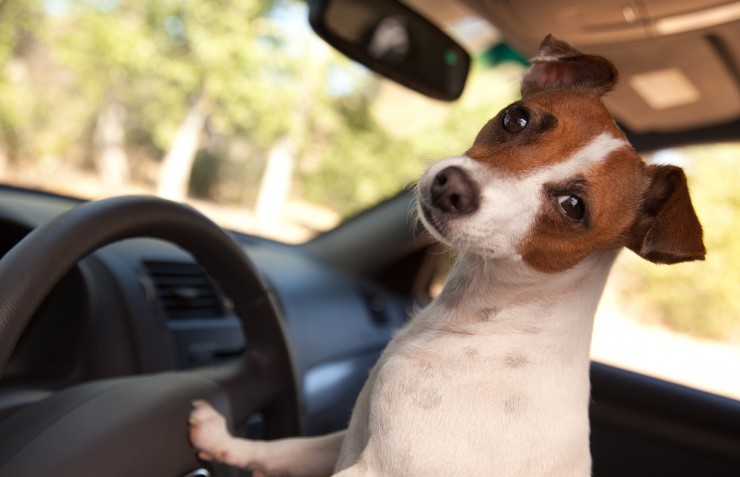Mans best friend is the dog, and many pet owners look upon their furry companion as part of the family so it stands to reason we want them to accompany us when we go traveling. If your motorhome is your sanctuary for you to take weekend breaks and the odd summer holiday, then the chances are, your pet is going to be more used to your house than your motorhome compared to someone who spends more time in their RV than they do at a fixed residence.
If you would rather take your pooch with you than leave them cooped in a kennels for the week / weekend then there a few simple steps that will make the trip as enjoyable as possible.
The most obvious one, would be to check your campsite will allow pets, those that do will often group all pet owners together so not to upset the other visitors. The beauty of owning an RV means your don't have to limit yourself to campsites but they make life easier. Finding one that is geographically convenient and allows pets shouldn't be too much of a problem.
Before you leave for your trip, plan everything. Make sure pup has his regular food throughout the excursion (subjecting him to strange foods can be rough on his digestive system and your carpets). Just because you're fuel tank doesn't need you to stop yet doesn't mean your dog feels the same. Plan regular stops so your dog can stretch his legs and relieve himself. Get your dog used to traveling before subjecting him to an eight hour drive by taking him for short journeys before hand. Get a list of the nearest vets to where you'll be staying, hopefully it will never be needed, but in an emergency you could waste precious time finding this information.
Pet carriers or crates are the safest way for your pet to travel in an RV. They can be secured in place so the dog cannot wander about (and explore the area under the peddles), if the worst happens and you're involved in an accident, your beloved pet will be safer in a carrier than being thrown around the cabin (or through a window). If you do have an accident and your need to get everyone out in a hurry, a pet carrier is a lot easier to grab than a scared and injured pup cowering in an out of reach corner. When traveling make sure it's not left in direct sunlight for long periods of time.
Never let your pet go anywhere with out his collar and tag securely in place. As loyal and well behaved as you think your dog is, the possibility is always there that he may wander off or get distracted. Make sure the number on the tag isn't just your home line (unless someone is staying at your house) but your mobile too. Microchips are also a great way to ensure your lost pet will be returned to you, they cause no pain or discomfort to the animal and they cant be pulled of running through trees or washed off in the rain. If the worst comes to the worst and your pet does go missing, you're going to need clear colour photos to assist with your search, a good quality photo that can be copied should be kept with all his vaccination and vet paper work in the RV.
Before you leave, accept the fact there might be one or two accidents on the trip. Dogs are not designed to be in constant movement and they may well get a little bit travel sick. The excitement of being somewhere new may also upset their digestive system. If you're worried about the upholstery of your RV, you may want to limit where your pet can and cant go, and remove any expensive bedspreads or throws. Always keep plenty of kitchen roll and antibacterial spray to hand to help clean up any little accidents.

 How to Safely Travel With Your Pets
How to Safely Travel With Your Pets
Planning a
How to Safely Travel With Your Pets
How to Safely Travel With Your Pets
Planning a
 Dogs are people too!!!
Dogs are people too!!!
A definitive open delib
Dogs are people too!!!
Dogs are people too!!!
A definitive open delib
 Five Of The Best Dog Friendly New Cars
Five Of The Best
Five Of The Best Dog Friendly New Cars
Five Of The Best
 10 Most Expensive Dog Breeds To Own
10 Most Expensive
10 Most Expensive Dog Breeds To Own
10 Most Expensive
 Turtle And Tortoise Diet
Turtle And Tortoi
Turtle And Tortoise Diet
Turtle And Tortoi